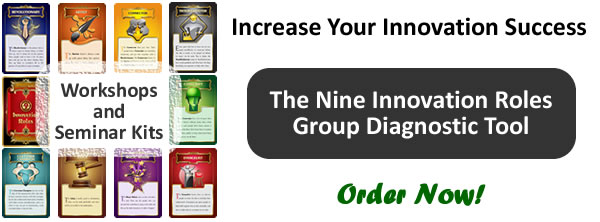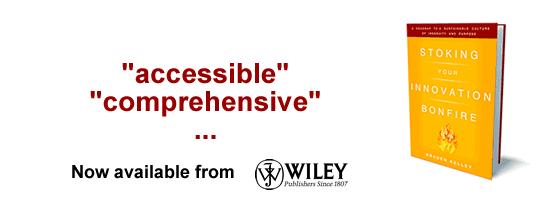 What may have started with a question from @evanjacobs at Amazon.com’s shareholder meeting one year ago, ended with interesting commentary from Amazon’s CEO – Jeff Bezos – on their philosophy around invention, innovation, and risk taking.
What may have started with a question from @evanjacobs at Amazon.com’s shareholder meeting one year ago, ended with interesting commentary from Amazon’s CEO – Jeff Bezos – on their philosophy around invention, innovation, and risk taking.
The key insights I extracted from Bezos’ response to the question about their lack of big visible market failures and whether Amazon is continuing to take bold enough risks are as follows:
1. Invention versus Innovation
It was very interesting that Jeff Bezos only used the word innovation once in his response, choosing instead to focus on talking about invention. I think that there is an interesting distinction and an important point there. Innovation is not something you do it’s something you’ve done. It’s backward looking to some extent because innovation requires widespread adoption. Innovation definitely can be a goal, while invention can be seen as a component of the pursuit, the attempt to innovate. One important point to remember is that inventions typically cross the bridge from invention to innovation because the solution is not only useful but it is valuable, and the customer makes this determination not you. Another important point – not made by Bezos – is that there are many other factors that go along with invention to create innovation that must be managed, including: psychology, communications, education, trends, politics, legal, and more. This leads me to the second insight extracted from Bezos’ response.
2. “We are willing to be misunderstood for long periods of time”
You may have a great vision for what is possible, but customers may not be ready. There may be incremental improvements or complementary products that must come onto the marketplace before your product can succeed. The political or legal climate may not be right for the transformation your product or service may enable (think Segway). You must seek to understand where you will be misunderstood so you can make plans to address the misunderstandings. If you assume people will ‘just get it once they see it’ you will fail. Also, the more disruptive or radical an innovation the more your communications must shift from explanation to education. But frankly, you can invent amazing things but just be too early. Corning’s Gorilla Glass was invented 50 years ago, and only now is becoming successful. Kindle wasn’t an overnight success, neither was Amazon’s third party seller effort – it took three tries to get it right. Which leads me to the third insight…
3. “We are stubborn on vision. We are flexible on details”
How many leaders can make this distinction accurately between vision and details? How many leaders can throw away their execution to start again in service of their vision? Apple threw away the Motorola ROKR and tried again and came up with the iPhone. Amazon tried three different times to get the third-party sellers just right because they believed in the vision that opening up their store to outside sellers was the right direction to take their business. The key distinction here and the questions to ask yourself when something is failing are the following:
- “Do we have the wrong vision for where the market is moving or do we have the wrong details?”
- “Have we misjudged key timing, legal, political, or other aspects in our pursuit of this vision?”
4. “We are planting more seeds right now, and it is too early to talk about them”
This is one of the keys to the pursuit of innovation – not going public too early. Bezos’ captures it perfectly with his comment about it being very difficult to innovate “if you are not willing to be misunderstood”, and I would add that it is very difficult if you are not PREPARED to be misunderstood. You must have a plan. So, innovate early and often, place lots of small bets, continue to invest in the ones that fit your vision and overcome key hurdles, and most importantly keep things quiet until you have a good grasp on exactly how you plan to explain your invention or educate people on its potential value BEFORE you go public – or the road from invention to innovation will only get harder.
What do you think about the Jeff Bezos commentary below?
Continue reading for an excerpt of the text of Bezos’ response, transcribed from the company’s webcast.
“You should anticipate a certain amount of failure. Our two big initiatives, AWS and Kindle — two big, clean-sheet initiatives — have worked out very well. Ninety-plus percent of the innovation at Amazon is incremental and critical and much less risky. We know how to open new product categories. We know how to open new geographies. That doesn’t mean that these things are guaranteed to work, but we have a lot of expertise and a lot of knowledge. We know how to open new fulfillment centers, whether to open one, where to locate it, how big to make it. All of these things based on our operating history are things that we can analyze quantitatively rather than to have to make intuitive judgments.
When you look at something like, go back in time when we started working on Kindle almost seven years ago…. There you just have to place a bet. If you place enough of those bets, and if you place them early enough, none of them are ever betting the company. By the time you are betting the company, it means you haven’t invented for too long.
If you invent frequently and are willing to fail, then you never get to that point where you really need to bet the whole company. AWS also started about six or seven years ago. We are planting more seeds right now, and it is too early to talk about them, but we are going to continue to plant seeds. And I can guarantee you that everything we do will not work. And, I am never concerned about that…. We are stubborn on vision. We are flexible on details…. We don’t give up on things easily. Our third-party seller business is an example of that. It took us three tries to get the third-party seller business to work. We didn’t give up.
But. if you get to a point where you look at it and you say look, we are continuing invest a lot of money in this, and it’s not working and we have a bunch of other good businesses, and this is a hypothetical scenario, and we are going to give up on this. On the day you decide to give up on it, what happens? Your operating margins go up because you stopped investing in something that wasn’t working. Is that really such a bad day?
So, my mind never lets me get in a place where I think we can’t afford to take these bets, because the bad case never seems that bad to me. And, I think to have that point of view, requires a corporate culture that does a few things. I don’t think every company can do that, can take that point of view. A big piece of the story we tell ourselves about who we are, is that we are willing to invent. We are willing to think long-term. We start with the customer and work backwards. And, very importantly, we are willing to be misunderstood for long periods of time.
I believe if you don’t have that set of things in your corporate culture, then you can’t do large-scale invention. You can do incremental invention, which is critically important for any company. But it is very difficult — if you are not willing to be misunderstood. People will misunderstand you.
Any time you do something big, that’s disruptive — Kindle, AWS — there will be critics. And there will be at least two kinds of critics. There will be well-meaning critics who genuinely misunderstand what you are doing or genuinely have a different opinion. And there will be the self-interested critics that have a vested interest in not liking what you are doing and they will have reason to misunderstand. And you have to be willing to ignore both types of critics. You listen to them, because you want to see, always testing, is it possible they are right?
But if you hold back and you say, ‘No, we believe in this vision,’ then you just stay heads down, stay focused and you build out your vision.”
![]() Sign up here to get Human-Centered Change & Innovation Weekly delivered to your inbox every week.
Sign up here to get Human-Centered Change & Innovation Weekly delivered to your inbox every week.

 For my last article for the
For my last article for the 
 Scott Painter, Founder and Chief Executive Officer of
Scott Painter, Founder and Chief Executive Officer of 
 Many of you out there are entrepreneurs, running small businesses (or big ones), struggling to make your business successful. But when did you first know that you were destined to be an entrepreneur? And what challenges or ridicule have you endured as the result of your decision to quit a stable job or perhaps to never take one?
Many of you out there are entrepreneurs, running small businesses (or big ones), struggling to make your business successful. But when did you first know that you were destined to be an entrepreneur? And what challenges or ridicule have you endured as the result of your decision to quit a stable job or perhaps to never take one?
 Picking up where my hugely popular article ‘
Picking up where my hugely popular article ‘ I had the honor of keynoting last year at the Imaginatik Innovation Leaders Forum at the New York Stock Exchange in New York City. But, I also had the privilege of hearing great innovation leaders speak from a diverse set of organizations including: Chubb, NYSE, Bombardier, Medco, and the General Services Administration (GSA).
I had the honor of keynoting last year at the Imaginatik Innovation Leaders Forum at the New York Stock Exchange in New York City. But, I also had the privilege of hearing great innovation leaders speak from a diverse set of organizations including: Chubb, NYSE, Bombardier, Medco, and the General Services Administration (GSA).
 I had the honor of keynoting at the Imaginatik Innovation Leaders Forum last year at the New York Stock Exchange (NYSE) in New York City. But, I also had the privilege of hearing great innovation leaders speak from a diverse set of organizations including: Chubb, NYSE, Bombardier, Medco and the General Services Administration (GSA).
I had the honor of keynoting at the Imaginatik Innovation Leaders Forum last year at the New York Stock Exchange (NYSE) in New York City. But, I also had the privilege of hearing great innovation leaders speak from a diverse set of organizations including: Chubb, NYSE, Bombardier, Medco and the General Services Administration (GSA). If the innovation war is just beginning, then you need to make sure you’re fighting it outside your organization — not inside.
If the innovation war is just beginning, then you need to make sure you’re fighting it outside your organization — not inside. Is the era of innovation over? Or is the war for innovation just beginning?
Is the era of innovation over? Or is the war for innovation just beginning? I’m working on a white paper for a client, and as part of my research, I’m looking for a few people who are willing to share what the innovation imperative was for their organization to start innovating (or to increase their effort spent on innovation).
I’m working on a white paper for a client, and as part of my research, I’m looking for a few people who are willing to share what the innovation imperative was for their organization to start innovating (or to increase their effort spent on innovation).